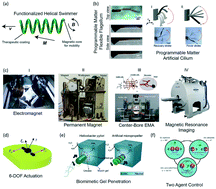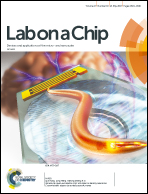Mobile microrobots for bioengineering applications
Abstract
Untethered micron-scale mobile robots can navigate and non-invasively perform specific tasks inside unprecedented and hard-to-reach inner human body sites and inside enclosed organ-on-a-chip microfluidic devices with live cells. They are aimed to operate robustly and safely in complex physiological environments where they will have a transforming impact in bioengineering and healthcare. Research along this line has already demonstrated significant progress, increasing attention, and high promise over the past several years. The first-generation microrobots, which could deliver therapeutics and other cargo to targeted specific body sites, have just been started to be tested inside small animals toward clinical use. Here, we review frontline advances in design, fabrication, and testing of untethered mobile microrobots for bioengineering applications. We convey the most impactful and recent strategies in actuation, mobility, sensing, and other functional capabilities of mobile microrobots, and discuss their potential advantages and drawbacks to operate inside complex, enclosed and physiologically relevant environments. We lastly draw an outlook to provide directions in the veins of more sophisticated designs and applications, considering biodegradability, immunogenicity, mobility, sensing, and possible medical interventions in complex microenvironments.

- This article is part of the themed collections: Lab on a Chip Recent Review Articles, Lab on a Chip Recent Open Access Articles and Lab on a Chip 2017 Most Downloaded Articles


 Please wait while we load your content...
Please wait while we load your content...